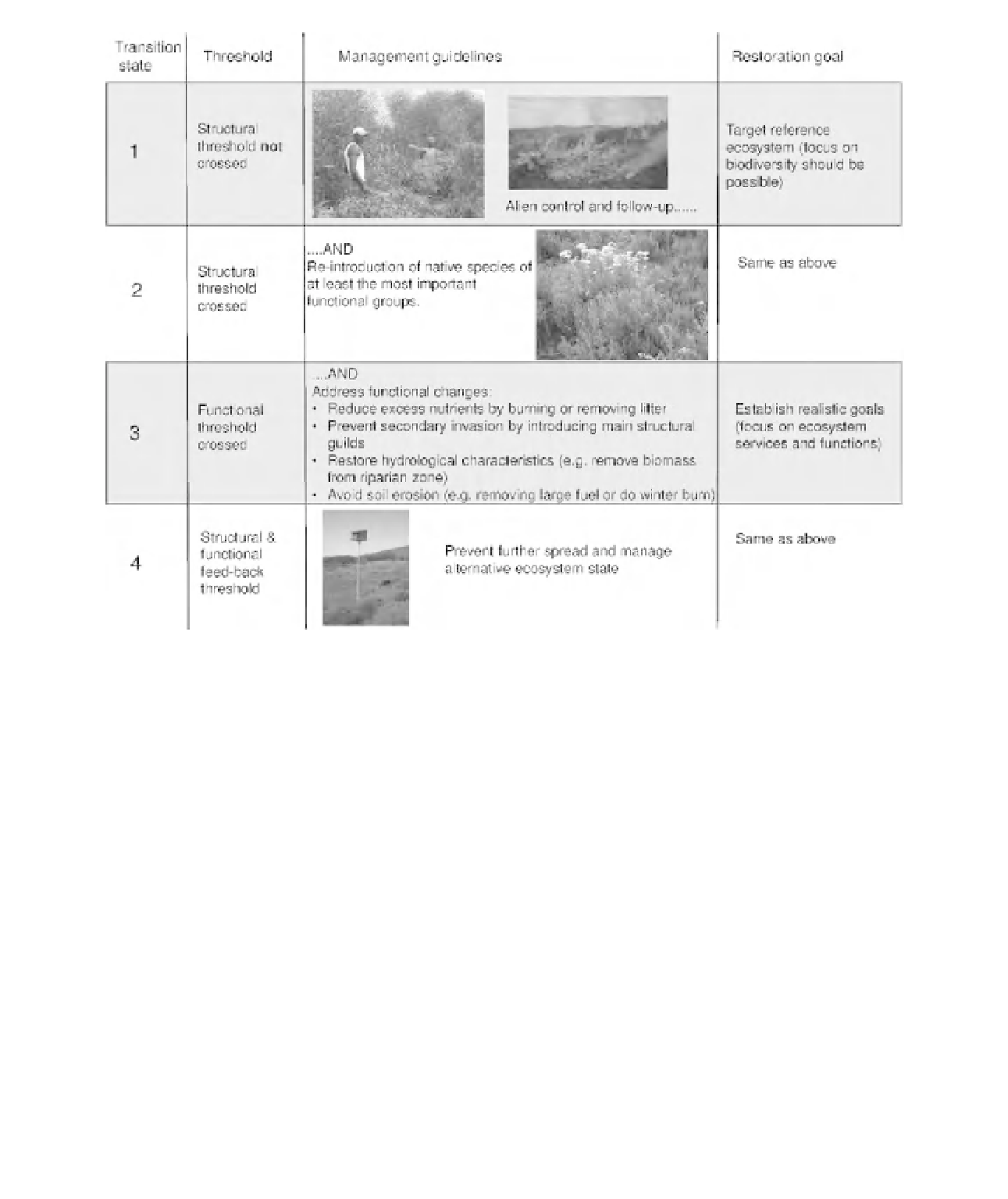Environmental Engineering Reference
In-Depth Information
Figure 20.6
Decision-making framework for aid in the restoration of invaded ecosystems.
By contrast, the decision-making process for ecosys-
tems which are heavily degraded (in our case study,
ecosystems with long-invaded
Acacia
stands; transition
states 3 and 4 in Table 20.1 and in Figure 20.6) is
complex and needs careful consideration. Restoration
of heavily degraded ecosystems will need major man-
agement input and hence substantial resources. Active
restoration should therefore only be undertaken once
realistic goals have been established.
Several criteria have been identifi ed to guide decision-
making process for ecosystems which are heavily
degraded:
• If the area is located in a priority conservation
region, restoration to at least a structurally representa-
tive natural state could be attempted.
• Restoration should, however, also be undertaken if
the surrounding landscape is relatively undisturbed as
the spread of the invasive species, if uncontrolled, may
cause further damage. Maintenance of a natural land-
scape will provide propagules for the recolonization of
neighbouring areas by native species.
• If the invaded area is located in a region of no con-
servation value and surrounded by transformed lands
(e.g. agriculture),
ecological restoration
to a target
reference ecosystem
(focusing on biodiversity) may
not be feasible or justifi able. In such cases,
rehabilita-
tion
(i.e. restoring ecosystem processes and functions)
may be more appropriate.
• If the alien species has the potential to spread rapidly to
invade new areas, the minimum management require-
ment would be the control of alien species' spread.
• Where a successful biocontrol agent has been estab-
lished, restoration
interventions
may be relatively
localized.




